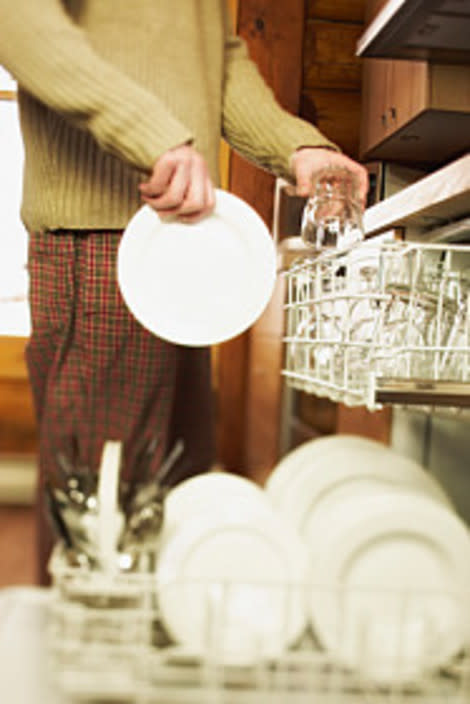10 Dishwasher Dos and Don’ts

The dishwasher is the source of more family debates than any other appliance-maybe because it truly is an equal opportunity machine: Everybody in the house over the age of four can load one. With Thanksgiving's teetering stacks of dishes just around the corner, we thought now was a good time to speak with experts Lucinda Ottusch, senior home economist at the Whirlpool Institute of Kitchen Science, and Beth Robinson, senior manager of brand experience at KitchenAid, to set things straight. Feel free to distribute to your in-laws.
Related link: The secret to cleaning pots and pans
1. Don't pre-rinse your dishes before loading.
Pre-rinsing can waste up to 20 gallons of water and cause your machine to clean less effectively. Today's detergents are designed to attack food particles, so if dishes are rinsed clean, the detergent may abrade glassware instead. Just scrape dishes of food scraps instead of rinsing.
2. Do load systematically according to manufacturer's instructions.
In general, the most effective way to load the washer is with plates in the bottom rack facing in toward the sprayer unit, glasses along the sides of the top rack, and flatware in the utensil basket. Nesting dishes or flatware to pack in more will not allow spray to clean them fully.
3. Do use a rinse aid.
Rinse aid helps water to sheet off dishes, leaving fewer water spots and allowing them to dry more quickly.
4. Don't use too much detergent.
Too much soap can scratch glassware. Ottusch recommends all-in-one tabs. They clean more effectively than regular detergent and counteract the effects of hard water.
5. Do wash with the lightest cycle possible.
If your last load contained dishes from a big spaghetti dinner complete with pots and pans, remember to reset the controls back to normal after the heavy-wash cycle. You'll save water and electricity.
6. Do check for clogged components.
If you dishes aren't coming out as clean as usual, the dishwasher filter might need to be cleaned or there may be food particles in the nozzles of the spray arms.
7. Don't run unless full.
Running a half-empty dishwasher is a waste of electricity and water. However, some newer models have a "top rack wash only" option that improves the efficiency of smaller loads.
8. Don't block the rotating spray arm.
The spray arm is located in the center of the base of the machine. Items such as pot handles and long utensils can impede its function. You can manually spin to check before running the dishwasher. Also, make sure larger items such as cutting boards or cookie sheets aren't blocking the detergent dispenser.
9. Don't wash wood, leaded crystal, antique china, or cast iron.
Wooden items can discolor and warp in a dishwasher. Some types of leaded crystal will etch with repeated washings. Hand-painted glaze may fade and gold leaf/gilt can discolor and fade. Cast iron may rust. When in doubt about a particular item, check with the manufacturer.
10. Do use the dishwasher instead of hand washing.
According to the U.S. Department of Energy, using an Energy Star qualified dishwasher instead of hand washing saves you nearly 5,000 gallons of water a year.
Related links:
